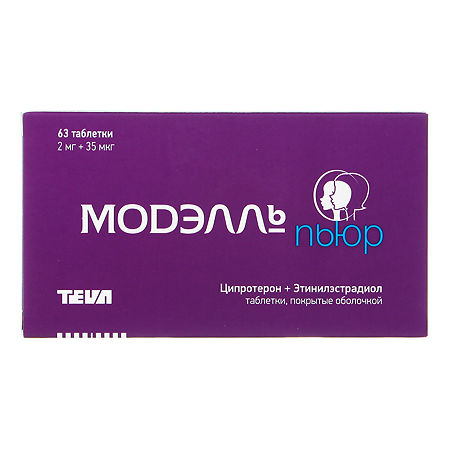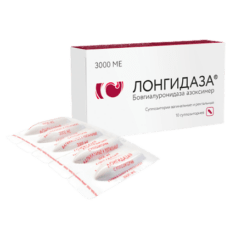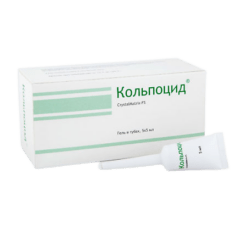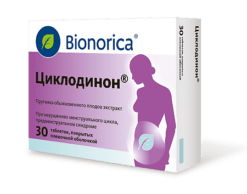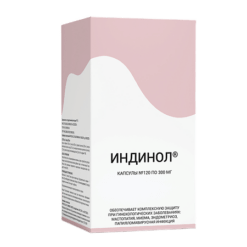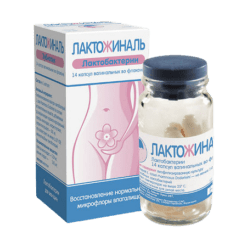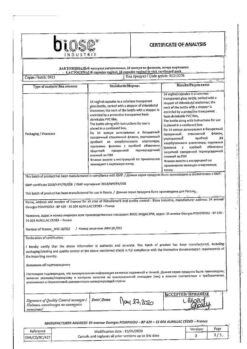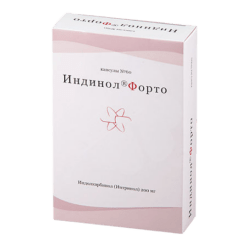No products in the cart.
Modell Pure, 2 mg+0.035 mg 63 pcs
€1.00
Out of stock
(E-mail when Stock is available)
EAN: 3850114221252
SKU: 265349
Categories: Contraceptive, Gynecology and Obstetrics, Hormonal, Medicine
Description
A combined contraceptive (estrogen+antiandrogen).
A combined low-dose monophasic contraceptive with antiandrogenic activity. The mechanism of action is due to its constituent antiandrogenic agent of steroid structure – cyproterone acetate and oral estrogen – ethinyl estradiol. It blocks androgen receptors, inhibits the secretion of gonadotropic hormones by the pituitary gland.
Cyproterone has the ability to competitively bind to natural androgens receptors (including testosterone, dihydroepiandrosterone, androstenedione) generated in small quantities in women, mainly in the adrenal glands, ovaries and skin. By blocking androgen receptors in target organs it reduces androgenization phenomena in women (due to disruption of processes mediated by hormone-receptor complexes at the level of main intracellular mechanisms).
In addition to antiandrogenic properties, it has gestagenic activity mimicking the properties of corpus luteum hormone. It inhibits the secretion of gonadotropic hormones by the pituitary gland and inhibits ovulation, which accounts for its contraceptive effect.
Ethinylestradiol enhances the central and peripheral effects of cyproterone on ovulation and maintains the high viscosity of cervical mucus, which makes it difficult for sperm to penetrate the uterine cavity and helps provide a reliable contraceptive effect.
Indications
Indications
— contraception in women with androgenization phenomena;
– treatment of androgen-dependent diseases/conditions in women (acne vulgaris (acne papulopustulosa, acne nodulocystica); seborrhea; androgenic alopecia; hirsutism).
Pharmacological effect
Pharmacological effect
Combined contraceptive drug (estrogen + antiandrogen).
Combined low-dose monophasic contraceptive drug with antiandrogenic activity. The mechanism of action is due to its constituent antiandrogenic steroid composition – cyproterone acetate and oral estrogen – ethinyl estradiol. Blocks androgen receptors, inhibits the secretion of gonadotropic hormones by the pituitary gland.
Cyproterone has the ability to competitively bind to the receptors of natural androgens (including testosterone, dihydroepiandrosterone, androstenedione), which are formed in small quantities in the body of women, mainly in the adrenal glands, ovaries and skin. By blocking androgen receptors in target organs, it reduces the phenomenon of androgenization in women (due to disruption of processes mediated by hormone-receptor complexes at the level of basic intracellular mechanisms).
Along with antiandrogenic properties, it has gestagenic activity that imitates the properties of the corpus luteum hormone. Inhibits the secretion of gonadotropic hormones by the pituitary gland and inhibits ovulation, which determines its contraceptive effect.
Ethinyl estradiol enhances the central and peripheral effects of cyproterone on ovulation, maintains the high viscosity of cervical mucus, which makes it difficult for sperm to penetrate into the uterine cavity and helps ensure a reliable contraceptive effect.
Special instructions
Special instructions
Medical examinations
Before starting or resuming use of the drug MODELL PURE, a woman must undergo a thorough general medical (including measurement of blood pressure, heart rate, determination of BMI) and gynecological examination, including examination of the mammary glands and cytological examination of scrapings from the cervix (Papanicolaou test), and exclude pregnancy.
The scope of additional studies and the frequency of follow-up examinations are determined individually. Typically, follow-up examinations should be carried out at least 2 times a year.
The woman should be warned that MODELL PURE does not protect against HIV infection (AIDS) and other sexually transmitted diseases.
If any of the conditions, diseases and risk factors listed below currently exist, the potential risks and expected benefits of using COCs should be carefully weighed in each individual case and discussed with the woman before she decides to start taking the drug. In case of worsening, intensification or the first manifestation of any of these conditions, diseases or risk factors, a woman should consult with her doctor, who may decide whether to discontinue the drug.
Diseases of the cardiovascular system
There is evidence of an increased incidence of venous and arterial thrombosis and thromboembolism (such as deep vein thrombosis, pulmonary embolism, myocardial infarction, stroke) when using COCs. These diseases are rare. The risk of developing venous thromboembolism is greatest in the first year of taking such drugs. The risk of developing thrombosis (venous and/or arterial) and thromboembolism increases:
– with age;
– in smokers (with an increase in the number of cigarettes or an increase in age, the risk further increases, especially in women over 35 years of age);
if available:
– a burdened family history (for example, venous or arterial thromboembolism ever in close relatives or parents at a relatively young age). In the case of a hereditary predisposition, the woman should be referred to an appropriate specialist to decide on the possibility of using COCs;
– obesity (BMI > 30 kg/m2);
– dislipoproteinemia;
– arterial hypertension;
– migraine;
– diseases of the heart valves;
– atrial fibrillation;
– prolonged immobilization, major surgery, any operation on the lower extremities or major trauma. In these situations, it is necessary to stop using the COC (in the case of a planned operation, at least 4 weeks before it) and not to resume taking it for 2 weeks after the end of immobilization.
The possible role of varicose veins and superficial thrombophlebitis in the development of venous thromboembolism remains controversial.
The increased risk of thromboembolism in the postpartum period should be taken into account.
Peripheral circulatory disorders may also occur in diabetes mellitus, SLE, tetany, hemolytic uremic syndrome, chronic inflammatory bowel disease (Crohn’s disease or UC), and sickle cell anemia.
An increase in the frequency and severity of migraine during the use of COCs (which may precede cerebrovascular events) may be grounds for immediate discontinuation of these drugs.
Tumors
An important risk factor for the development of cervical cancer is the persistence of papillomavirus. Some epidemiological studies suggest an additional increase in this risk with long-term COC use, but this remains controversial because the extent to which the studies account for confounding risk factors such as cervical screening and sexual behavior, including lower use of barrier methods, is unclear.
The connection between the use of COCs and breast cancer has not been proven. There is a slightly increased relative risk of developing breast cancer diagnosed in women currently taking COCs. The increased risk gradually disappears within 10 years of stopping these drugs. The observed increased risk may be a consequence of careful monitoring and earlier diagnosis of breast cancer in women using COCs. Women who have ever used PDAs are diagnosed with earlier stages of breast cancer and
clinically it is less pronounced than in women who have never used COCs.
In isolated cases, during the use of COCs, the development of benign, and in extremely rare cases, malignant liver tumors was observed, which in some cases led to life-threatening intra-abdominal bleeding. In case of severe abdominal pain, liver enlargement, or signs of intra-abdominal bleeding, the differential diagnosis should take into account the possibility of a liver tumor in patients taking COCs.
Other states
Women with hypertriglyceridemia (or a family history of this condition) may have an increased risk of developing pancreatitis while using COCs.
Although slight increases in blood pressure have been described in many women taking COCs, clinically significant increases in blood pressure have rarely been reported. However, if a persistent, clinically significant increase in blood pressure develops during the use of COCs, these drugs should be discontinued and treatment of arterial hypertension should be initiated. Taking COCs can be continued if normal blood pressure values are achieved with antihypertensive therapy.
The following conditions have been reported to develop or worsen during both pregnancy and COC use, but their association with COC use has not been proven: jaundice and/or pruritus associated with cholestasis; formation of gallstones; porphyria; SLE; hemolytic-uremic syndrome; Sydenham’s chorea; herpes during pregnancy; hearing loss associated with otosclerosis. Cases of Crohn’s disease and UC associated with the use of COCs have also been described.
In women with hereditary forms of angioedema, exogenous estrogens may cause or worsen symptoms of angioedema.
Acute or chronic liver dysfunction may require discontinuation of COCs until liver function tests return to normal. Recurrent cholestatic jaundice, which develops for the first time during pregnancy or previous use of sex hormones, requires discontinuation of COC use.
Although COCs may have an effect on insulin resistance and glucose tolerance, there is no need to change the therapeutic regimen in diabetic patients using low-dose COCs (
Chloasma can sometimes develop, especially in women with a history of pregnancy chloasma. Women with a tendency to chloasma should avoid prolonged exposure to the sun and exposure to ultraviolet radiation while using COCs.
Treatment (contraception) must be stopped immediately if pregnancy occurs, the development of migraine-like headaches (if they did not exist previously), the appearance of early signs of phlebitis or phlebothrombosis (unusual pain or swelling of the veins in the lower extremities), the appearance of jaundice, visual impairment, cerebrovascular disorders, stabbing pain of unknown etiology when breathing or coughing, pain and tightness in the chest, with increased HELL.
Admission should also be stopped 3 months before a planned pregnancy, 6 weeks before a planned surgical intervention and during prolonged immobilization.
With diarrhea and vomiting, the contraceptive effect is reduced, therefore, without stopping taking MODELL PURE, it is necessary to use additional non-hormonal methods of contraception.
Laboratory tests
Taking COCs may affect the results of some laboratory tests, including liver, kidney, thyroid, adrenal function, plasma transport proteins, carbohydrate metabolism, coagulation and fibrinolysis parameters.
Laboratory staff should be warned about the use of oral contraceptives.
It is possible that the results of skin allergy tests may change and the concentrations of LH and FSH may decrease.
Due to the fact that the contraceptive effect is fully manifested by the 14th day from the start of use, in the first 2 weeks it is recommended to additionally use non-hormonal (barrier) methods of contraception.
The drug MODELL PURE does not affect the course of puberty during the formation of a normal menstrual cycle.
Prescription after childbirth is recommended no earlier than the first normal menstruation after childbirth.
In cases of acyclic bleeding during the first 3 weeks of hormonal contraception, it is possible to continue taking the drug; as a rule, the bleeding stops on its own. If there is no bleeding during the 7-day interval between taking the drug, taking the tablets should be stopped until pregnancy is ruled out.
Effect on the menstrual cycle
While using COCs, irregular (acyclic) spotting/bleeding from the vagina (spotting or breakthrough bleeding) may occur, especially during the first months of use. Therefore, any irregular bleeding should be assessed after an adaptation period of approximately three cycles.
If irregular bleeding recurs or develops after previous regular cycles, careful evaluation should be performed to rule out malignancy or pregnancy.
Some women may not develop withdrawal bleeding during a pill-free break. If COCs are taken as recommended, it is unlikely that the woman will be pregnant. However, if the COC is not used regularly and there are no two withdrawal bleedings in a row, the drug cannot be continued until pregnancy has been ruled out.
Impact on the ability to drive vehicles and operate machinery
Not identified.
Active ingredient
Active ingredient
Cyproterone, Ethinylestradiol
Composition
Composition
1 tab.
ethinyl estradiol micronized 35 mcg
cyproterone acetate micronized 2 mg
Excipients:
lactose monohydrate – 29.115 mg,
corn starch – 20 mg,
povidone K25 – 2.1 mg,
talc – 1.65 mg,
magnesium stearate – 100 mcg.
Shell composition:
sucrose – 19.637 mg, calcium carbonate – 8.402 mg, talc – 4.095 mg, titanium dioxide – 278 mcg, povidone K90 – 200 mcg, macrogol 6000 – 2.178 mg, glycerol 85% – 139 mcg, iron dye oxide – 27 mcg, glycol mountain wax – 44 mcg.
Contraindications
Contraindications
– thrombosis (venous and arterial) and thromboembolism currently or in history (including deep vein thrombosis, pulmonary embolism), coronary artery disease, stroke;
– conditions preceding thrombosis (including transient ischemic attacks, angina) currently or in history;
– complicated lesions of the valvular apparatus of the heart (pulmonary hypertension, atrial fibrillation, history of subacute bacterial endocarditis);
– uncontrolled arterial hypertension (systolic blood pressure above 160 mm Hg or diastolic blood pressure above 100 mm Hg);
– serious surgery with prolonged immobilization;
— diabetes mellitus with vascular complications;
– multiple or pronounced risk factors for venous or arterial thrombosis, incl. diseases of the cerebral vessels or coronary arteries, arterial hypertension, advanced age;
– liver failure and severe liver diseases (until normalization of liver tests);
– active viral hepatitis, liver cirrhosis in the stage of decompensation;
– idiopathic jaundice or itching during a former pregnancy;
– congenital hyperbilirubinemia (Gilbert, Dubin-Johnson and Rotor syndromes);
– Liver tumors (benign or malignant) currently or in history;
– migraine with focal neurological symptoms currently or in history;
– pancreatitis with severe hypertriglyceridemia currently or in history;
– identified or suspected hormone-dependent malignant diseases (including breast and endometrial cancer);
– bleeding from the vagina of unknown origin;
– sickle cell anemia;
– otosclerosis worsening during pregnancy;
– history of herpes during pregnancy;
– smoking over the age of 35;
– pregnancy;
– lactation period;
– hypersensitivity to any of the components of the drug.
With caution
The potential risk and expected benefit of using COCs should be carefully weighed in each specific case in the presence of the following diseases/conditions and risk factors.
– risk factors for the development of thrombosis: smoking, obesity, dyslipoproteinemia, arterial hypertension, migraine, heart valve defects, prolonged immobilization, major surgical interventions, extensive trauma, hereditary predisposition to thrombosis (thrombosis, blood clotting disorders, myocardial infarction or cerebrovascular accident at a young age in one of the immediate relatives);
– diseases in which peripheral circulatory disorders may occur: diabetes mellitus (or a predisposition, for example, unexplained glycosuria), SLE, renal dysfunction, hemolytic-uremic syndrome, Crohn’s disease and UC, varicose veins, phlebitis of superficial veins;
– hypertriglyceridemia;
– liver diseases;
– a family history of breast cancer or a personal history of a benign breast tumor;
– history of diagnosed depression;
– uterine fibroids;
– cholelithiasis;
– intolerance to contact lenses;
– diseases that first appeared or worsened during pregnancy or against the background of previous use of sex hormones (for example, jaundice and/or itching associated with cholestasis, cholelithiasis, porphyria, Sydenham’s chorea, chloasma).
Side Effects
Side Effects
Common: headache, depressed mood, mood changes, nausea, abdominal pain, weight gain, breast tenderness and tightness.
Uncommon: migraine, vomiting, diarrhea, fluid retention, breast enlargement, rash, urticaria, decreased libido.
Rarely: hypersensitivity reactions, poor tolerance to contact lenses, weight loss, increased libido, vaginal discharge, breast discharge, rash, erythema nodosum, erythema multiforme, age spots on the face (chloasma).
The following serious side effects have been reported in women using combined oral contraceptives:
— venous thromboembolic disorders;
— arterial thromboembolic disorders;
— cerebrovascular disorders;
— arterial hypertension;
— hypertriglyceridemia;
– impaired glucose tolerance or effects of peripheral insulin resistance;
— liver tumors (benign and malignant);
– liver dysfunction;
– chloasma;
– in women with hereditary angioedema, provocation or exacerbation of symptoms of the disease under the influence of exogenous estrogens;
– the appearance or worsening of the following conditions, the relationship of which with the use of combined oral contraceptives has not been proven: jaundice and/or itching associated with cholestasis; formation of gallstones; porphyria; systemic lupus erythematosus; hemolytic uremic syndrome; chorea; herpes during pregnancy; hearing loss associated with otosclerosis, Crohn’s disease and ulcerative colitis, cervical cancer.
Interaction
Interaction
The effect on hepatic metabolism of drugs that induce liver microsomal enzymes can lead to an increase in the clearance of sex hormones, which in turn can lead to breakthrough bleeding or reduced contraceptive reliability. Such drugs include: phenytoin, barbiturates, primidone, carbamazepine, rifampicin, rifabutin, possibly also oxcarbazepine, topiramate, felbamate, griseofulvin and preparations containing St. John’s wort.
HIV protease inhibitors (eg, ritonavir) and non-nucleoside reverse transcriptase inhibitors (eg, nevirapine) and combinations thereof also have the potential to affect hepatic metabolism.
During the use of drugs that affect microsomal enzymes, and for 28 days after their discontinuation, a barrier method of contraception should be additionally used.
Some antibiotics (eg, penicillins and tetracyclines) may reduce the enterohepatic circulation of estrogens, thereby lowering ethinyl estradiol concentrations. During the use of antibiotics (such as penicillins and tetracyclines) and for 7 days after their discontinuation, a barrier method of contraception should be additionally used. If the period of use of the barrier method of contraception ends later than the tablets in the package, you need to move on to the next package of MODELL PURE without the usual break in taking the tablets.
COCs may affect the metabolism of other drugs, resulting in increased (eg cyclosporine) or decreased (eg lamotrigine) plasma and tissue concentrations. Adjustment of the drug dosage regimen may be required.
Overdose
Overdose
Symptoms: nausea, vomiting, bleeding when discontinuing the drug.
Treatment: symptomatic therapy; there is no specific antidote.
Manufacturer
Manufacturer
Haupt Pharma Münster GmbH, Germany
Additional information
| Manufacturer | Haupt Pharma Münster GmbH, Germany |
|---|---|
| Medication form | pills |
| Brand | Haupt Pharma Münster GmbH |
Related products
Gynecology and Obstetrics
Buy Modell Pure, 2 mg+0.035 mg 63 pcs with delivery to USA, UK, Europe and over 120 other countries.

